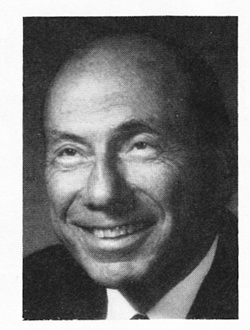Is There a Functional Appliance in Your Future?
Will 1982 be the year of the functional appliances? Considering the relatively small amount of hard data that has been available with regard to the efficacy of these appliances, the increasing interest in them and use of them by orthodontists in the United States--the prototypic fixed appliance practitioners--might seem unusual. It might even seem paradoxical that European orthodontists, who have had the most experience with removable appliances, including functional appliances, are showing an increasing interest in and use of fixed appliances at the same time. Yet, we may be witnessing the orthodontic marriage of the century--the wedding of fixed and functional appliances.
Until recently, and perhaps even now in many parts of Europe, the use of functional appliances may have been related to economics. The level of public interest in orthodontic treatment and the level of fees perhaps could not support the expense of fixed appliance therapy. This same thought may explain at least some of the present U.S. interest in these appliances. However, if the premise was true, it may offer one explanation of why functional appliances frequently failed. If they were the only appliances in the orthodontist's armamentarium, there had to be a great many cases that were morphologically, physiologically, or psychologically unsuited to the therapy. There is no appliance, fixed or removable, that is all things to all people. The major shortcoming of fixed appliance therapy today, sophisticated as it is, is its acceptance of retrognathic mandibles as immutable and the frequency of "correcting" a normal maxilla to a retrusive mandible. The hope of the functional appliances is in the possibility that, in a growing individual, they may stimulate or permit an underdeveloped mandible to grow to its potential or beyond--and treat the defect, rather than accommodating to it. This is a significant source of the interest in functional appliances.
It will signal a new era in the treatment of many Class II cases, if this can be done. However, only a small percentage of Class II cases with retrognathic mandibles have a configuration of teeth that would permit correction with a functional appliance alone. The majority of these cases will need setting up of the teeth to a suitable configuration first, eliminating dental interferences to functional change. Even if the functional change is not prevented, nothing is more disappointing than to see an apparent anteroposterior correction with a functional appliance, but with the posterior occlusion in a shambles. Fixed appliance therapy is needed before and after most functional appliance therapy, if we are to deliver the quality of result of which modern orthodontics is capable. It seems obvious that this may mean longer and more expensive orthodontic treatment, not shorter and cheaper.
If the current interest in functional appliances diminishes or fades with time, one of the reasons may well be that they may be promoted as cheap appliances for low-fee orthodontic treatment. Another reason might be mixed results or inconclusive evidence that the appliances can do what they are intended to do. Perhaps we shall see some good positive data published in the next year or two to confirm the efficacy of functional appliances. Negative results will not be conclusive, because positive results will drive out negative results, which could be due to design and cooperation deficiencies. Modification in appliance design may be made by accident or misunderstanding, or in an effort to make the appliance more acceptable to the patient or to the practitioner, but they can have a crucial effect on the performance of the appliance. One need only consider the difference in the performance of a Woodside/Harvold type activator when the inner flanges were shortened or in the Frankel appliance when various design modifications were adopted.
The problem of patient cooperation in wearing functional appliances may be no greater than with other appliances, but it is certainly no less. One of the patriarchs in orthodontics, A.V. Greenstein, was fond of telling of a correspondence he had with Hays Nance in which he asked, "Are you using headgears?" Dr. Nance sent him a terse reply, "I am. My patients aren't" At the time, most orthodontists would probably have given a similar reply. One could speculate that the lack of patient cooperation in wearing a headgear appliance stemmed in part from the orthodontists' own ambivalence toward the appliance--that it was old-fashioned, and that it was really too much to expect a patient to wear a thing like that. Coupled with inadequate patient education and mediocre efforts to motivate patients to cooperate in wearing the appliance, these were probably responsible for the failure of many an attempt at headgear therapy. A great many orthodontists have overcome these unpromising beginnings, and headgear in various forms has become a fairly standard appliance. We may be going through a similar cycle today with functional appliances.
If functional appliances are to be the hope of Class II cases with retrognathic mandibles, they require attention to appliance selection and design, case selection, patient education and motivation, and probably most of all to the marriage of fixed and functional appliances. Probably, for most Class II cases with growth potential, three stages of treatment are necessary: a first stage of fixed appliance treatment to eliminate occlusal interferences and to set up the dentition for a positional change; a second stage of treatment with a functional appliance to create the positional change and form a framework for functional change in muscle activity balance, in the dentition, and in growth of the mandible; and a third stage of fixed appliance treatment to accomplish the fine finishing of the occlusal relationships.


